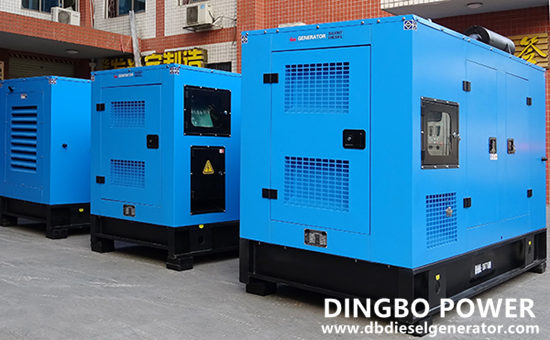dingbo@dieselgeneratortech.com
+86 134 8102 4441

- Home
- Products
- About Us
- Service
- News
- Technical Support
- Contact Us
dingbo@dieselgeneratortech.com
+86 134 8102 4441
May. 29, 2023
Handling of One Point Ground Fault in the Rotor Circuit Misreported by the 1 Protection Device
(1) Fault symptom:
The excitation regulator is energized, and the generator terminal voltage gradually establishes. After a transitional process, it tends to stabilize. However, at this time, the protection device reports a one point grounding fault in the rotor circuit, and the generator operates normally.
By using the rotor voltmeter to measure the positive and negative voltage of the generator rotor to the ground, the voltage between the two poles to the ground is not zero, indicating that there is no point ground fault in the generator rotor. Press the reset button of the protection device, and the signal of one point grounding fault in the rotor circuit disappears.
(2) Fault analysis:
Analyzing the principle of one point grounding action in the rotor circuit of the protection device, it is known that the protection device judges the rotor grounding fault based on the rotor voltage. When the excitation regulation device first starts excitation, a command is issued to input the initial excitation power supply. The rotor voltage rises, and the generator voltage rises. After a period of delay, the excitation regulation device automatically exits the initial excitation power supply. Since the initial reference value of the excitation regulator terminal voltage is lower than the terminal voltage generated by the initial excitation power supply, after the initial excitation power supply exits, the rotor voltage will suddenly drop a lot, and then the rotor voltage will be fed back to the protection, The protection device believes that a short circuit in the rotor circuit caused a sudden drop in rotor voltage, so the protection signal is triggered. After the excitation regulator is inverted and de-excited, the test is conducted again. Before the excitation regulator is energized, manually increase the voltage reference value of the excitation regulator to ensure that it is greater than the generator terminal voltage generated by the initial excitation power supply. After the excitation is boosted again, the generator operates normally and the protection device does not send a grounding fault alarm for the rotor circuit.
(3) Fault handling:
This accident indicates that the one point grounding function of the rotor circuit of the protection device is not perfect enough, and its action mechanism is not scientific enough, which is prone to misoperation. It is recommended to improve the one point grounding function of the rotor circuit or replace it with a more reliable one point grounding protection device.

Before the one point grounding protection function of the rotor circuit is not perfect, adjust the initial excitation reference value of the excitation regulating device. The initial voltage reference value is required to be greater than the generator terminal voltage generated by the initial excitation power supply.
Analysis of Generator Reactive Power Fluctuation Fault Caused by Negative Adjustment of Near End Load Setting
(1) Fault symptom:
A 60mva generator of a large state-owned enterprise's self owned power plant was originally equipped with an old-fashioned analog excitation regulator. During maintenance, it was replaced with a microcomputer excitation regulator. After the excitation regulator was debugged, the generator underwent grid connection tests. During the test, the reactive power of the generator operated stably. A few days later, after the generator restarted, there were long-term fluctuations in the terminal voltage and reactive power of the generator.
(2) Fault analysis:
After the fault occurred, the technical personnel of the power plant and the manufacturer conducted a technical analysis of the fault, and compared and analyzed the recorded data during the test period and the recorded data during the fault. The results showed the differences before and after: the load of the generator during the test period was mainly output to the high-voltage busbar (35kV), which was then supplied to the enterprise for use; When the fault occurs, the load of the generator is mainly supplied to the low-voltage busbar (6.3kV) for use. Recalculate the fixed value and set the reactive power adjustment coefficient to -4%. Due to the use of unit wiring in the main wiring of generator, the debugging personnel chose the reactive power adjustment coefficient to be -4% based on the recommendation of reactive power adjustment setting in the excitation standard. However, ignoring the role of low-voltage bus loads, for bus loads, the impedance between the generator stator and the load is zero. Based on the physical meaning of the reactive power adjustment coefficient, For generator sets with heavy end load, their reactive power adjustment coefficient must be positive.
(3) Fault handling:
After changing the reactive power adjustment coefficient to 4%, the fluctuations in reactive power of the generator quickly subsided and the operation became stable.
Quicklink
Mob.: +86 134 8102 4441
Tel.: +86 771 5805 269
Fax: +86 771 5805 259
E-mail: dingbo@dieselgeneratortech.com
WhatsApp: +86 134 8102 4441
Add.: No. 10 Kechuang Road, High tech Zone, Nanning, Guangxi, China